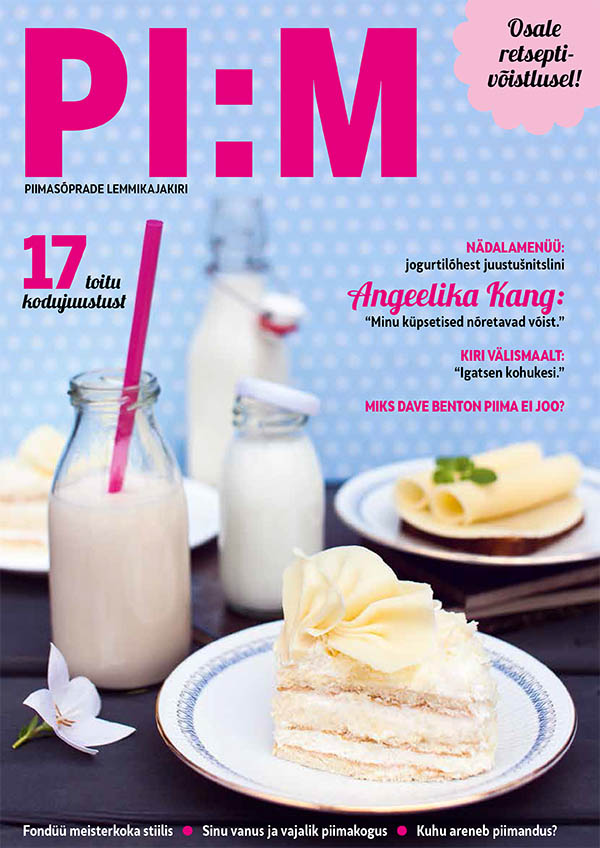Homogenisation
Homogenisation is breaking up the fat globules in milk under high pressure. This avoids the cream layer forming on top. As a result of homogenisation, the colour of milk products becomes whiter, the texture and flavour of fermented milk products improves and the components of milk products can be assimilated better.
Starter Culture
Starter culture, a combination of one or more species or strains of microorganisms, is used for manufacturing fermented milk products. Mostly starters combining lactic acid bacteria are used for producing dairy products.
Ultra-High Temperature Processing (UHT)
Ultra-high temperature processing is heating at a temperature over 100 °C. The aim of ultra-high temperature processing is to deactivate all microflora. UHT products are usually packaged aseptically so that their shelf-life can extend for months. UHT products can be stored at room temperature. Typically, UHT processing takes place at a temperature of 137–140 °C for 2–10 seconds.
Mesophilic Starter Culture
Mesophilic starter is a combination of lactic acid bacteria, the optimal growth of which takes place at 25–30 °C. Mesophilic starter culture is used in manufacturing sour milk, sour cream, kefir, curd and certain types of cheeses. This group comprises Lactococcus lactis subsp. lactis, Lactococcus lactis subsp. cremoris, Lactococcus lactis subsp. lactis biovar diacetylactis and Leuconostoc mesenteroides subsp. cremoris.
Pasteurization
Pasteurization is the heat-treatment of milk at a temperature below 100 °C. First and foremost, the aim of pasteurization is to deactivate pathogenic microflora and ensure the food safety of milk. The efficiency of deactivation of micro-organisms must be >99%, and in the case of pathogenic micro-organisms 100%. Pasteurization increases the shelf-life of dairy products.
Milk products are manufactured from pasteurized milk; the pasteurization time and temperature of which can vary. The following types of pasteurization are more common:
1) pasteurization at a temperature of 72–75 °C for 15–20 seconds;
2)high-temperature pasteurization at a temperature of 80-85 °C for 1-5 seconds;
The pasteurization time of fermented milk products is extended to improve the properties of the final products.
Prebiotics
Prebiotics are non-digestible food components that foster the growth and/or activity of the useful bacteria in the gastrointestinal tract and are therefore useful for people. Most of the prebiotics are water-soluble fibres. The most common prebiotics used in milk products are polydextrose, inulin and oligosaccharides.
Probiotics
Probiotics are biologically active living micro-organisms of human origin that have a healing effect on the functions and health of the human body. The effect of probiotics must be clinically proven. The probiotics most often used in milk products are Bifidobacterium lactis, Lactobacillus acidophilus, Lactobacillus rhamnosus, Lactobacillus fermentum, Lactobacillus plantarum.
Standardisation
On average, raw milk contains 4% of fat. Standardisation is the adjustment of the composition of raw milk to give the final product the desired mass fraction of fat, protein or any other component. During centrifuging milk in a separator, i.e separation, milk is separated into cream and skimmed milk, then cream is added to skimmed milk (standardisation) to produce dairy products with different fat contents.
Thermisation
Thermisation is the heat-treatment of raw milk at a temperature of 57–68 ºC for at least 15 seconds. This technology is used in manufacturing French mould-ripened soft cheeses.
Thermophilic Starter Culture
Thermophilic starter is a combination of lactic acid bacteria the optimal growth of which takes place at 40 °C. Thermophilic starter is used for manufacturing yogurt and certain types of cheeses. This group comprises Streptococcus thermophilus ja Lactobacillus delbrueckii subsp. bulgaricus.
Share ►


